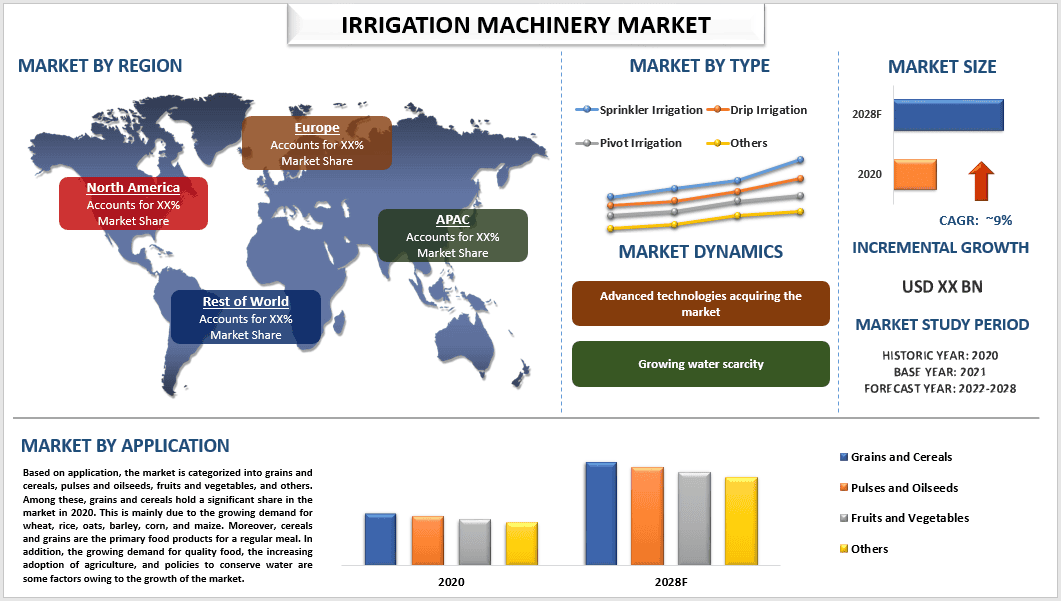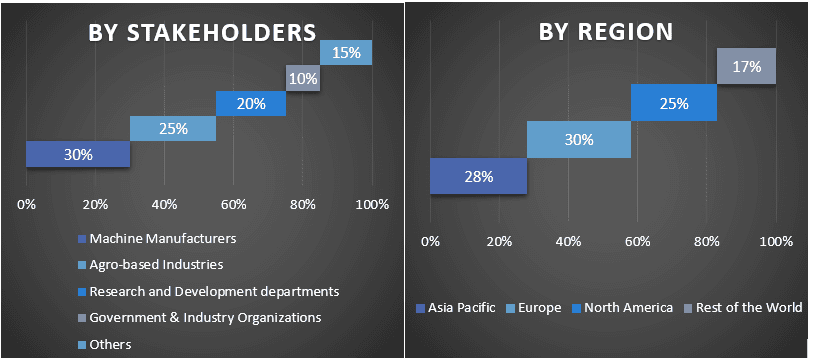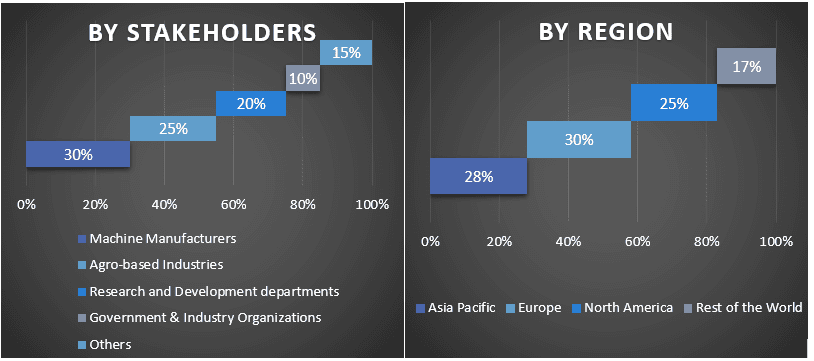Emphasis on Type (Sprinkler Irrigation, Drip Irrigation, Pivot Irrigation, and Others); Application (Grains and Cereals, Pulses and Oilseeds, Fruits and Vegetables, and Others); and Region/Country

Global Irrigation Machinery Market is expected to grow at a significant rate of around 9% during the forecast period 2022-2028. Irrigation machinery is used to supply water to the crops in a controlled manner with the help of machines to maintain the quality, quantity, and growth of the crops. Water scarcity is the major driver of the growth of this market. Moreover, growing demand for food, advancements in technology, and development in farming are also the factors driving the growth of this market. In addition, water scarcity in several areas is the prime factor driving the growth of the market. Moreover, the government is taking the initiative to make water within reach of farmers and working on the conservation of water. For instance, the Indian Agricultural Research Institute (IARI) established the design of a micro-irrigation system (DOMIS), a web-based application system that helps in designing customized micro-irrigation systems for efficient water utilization, under several agro-climatic conditions.
Nelson Irrigation Corporation, Netafim Limited, Mahindra EPC Irrigation Ltd, Jain Irrigation Systems Limited, T-L Irrigation co, The Toro Company, Valmont Industries, Inc, Deere & Company, Lindsay Corporation, and Rain Bird Corporation are some of the key players in the market. Several M&As along with partnerships have been undertaken by these players to facilitate customers with hi-tech and innovative products/technologies.
Insights Presented in the Report
“Amongst type, Sprinkler Irrigation category to witness robust CAGR during the forecast period”
Based on type, the market is segmented into sprinkler irrigation, drip irrigation, pivot irrigation, and others. Sprinkler irrigation category to witness higher CAGR during the forecast period. Sprinkler irrigation is the way to apply water to the crops in a controlled manner just like rainfall. Moreover, factors like the growing demand for an agro-based resource, maintaining the hydration and growth of crops, development towards farming, and the increment in the price of crops that is also a problem for the low middle-class family are owning to increase the adoption of agriculture as well as the growth of the market. For instance, according to the Food and Agriculture Organization of the United Nations in 2020, global food prices are increasing rapidly due to rising demand such as cereal price index rose by 1.9 %, sorghum prices rose by 8.6 %, Maize prices rose by 2.2 % and sugar prices index rose by 6.7 %.
“Amongst application, the Grains and Cereals to hold a significant share in the market in 2020”
Based on application, the market is categorized into grains and cereals, pulses and oilseeds, fruits and vegetables, and others. Among these, grains and cereals hold a significant share in the market in 2020. This is mainly due to the growing demand for wheat, rice, oats, barley, corn, and maize. Moreover, cereals and grains are the primary food products for a regular meal. In addition, the growing demand for quality food, the increasing adoption of agriculture, and policies to conserve water are some factors owing to the growth of the market.
“North America to hold a significant share in the market”
In 2020, North America held a significant share of the global irrigation machinery market. As North American businesses have been introducing new items into the market, the region is seen as having the fastest growing market. By giving farmers various subsidies, government policies are also assisting market expansion. In addition, the industry is expanding because of factors such as government policies and subsidies, technology advancements, and growing water scarcity concerns. Additionally, as natural irrigation systems become more adaptable and crop production demands rise, the market for irrigation machinery is expected to expand. For instance, U.S. corn growers produced 15.1 billion bushels, up 7% from 2020 and the second highest on record. Corn yield in the United States is estimated at a record high of 177.0 bushels per acre, 5.6 bushels above the 2020 yield of 171.4 bushels per acre. Area harvested for grain, at 85.4 million acres, is up 4% from 2020
Reasons to buy this report:
Customization Options:
The global irrigation machinery market can further be customized as per the requirement or any other market segment. Besides this, UMI understands that you may have your own business needs, hence feel free to connect with us to get a report that completely suits your requirements.
1. Market Introduction
2. Research Methodology Or Assumption
3. Market Synopsis
4. Executive Summary
5. Impact Of Covid-19 On The Irrigation Machinery Market
6. Irrigation Machinery Market Revenue, 2020-2028f
7. Market Insights By Type
8. Market Insights By Application
9. Market Insights By Region
10. Irrigation Machinery Market Dynamics
11. Irrigation Machinery Market Opportunities
12. Irrigation Machinery Market Trends
13. Demand And Supply-side Analysis
14. Value Chain Analysis
15. Competitive Scenario
16. Company Profiled
17. Disclaimer
Research Methodology for the Irrigation Machinery Market Analysis (2022-2028)
Analyzing the historical market, estimating the current market, and forecasting the future market of the global irrigation machinery market were the three major steps undertaken to create and analyze the adoption of automotive subscription services in major regions globally. Exhaustive secondary research was conducted to collect the historical market numbers and estimate the current market size. Secondly, to validate these insights, numerous findings and assumptions were taken into consideration. Moreover, exhaustive primary interviews were also conducted, with industry experts across the value chain of the global irrigation machinery market. Post assumption and validation of market numbers through primary interviews, we employed a top-down/bottom-up approach to forecasting the complete market size. Thereafter, market breakdown and data triangulation methods were adopted to estimate and analyze the market size of segments and sub-segments of the industry pertains to. Detailed methodology is explained below:
Analysis of Historical Market Size
Step 1: In-Depth Study of Secondary Sources:
Detail secondary study was conducted to obtain the historical market size of the irrigation machinery market through company internal sources such as annual reports & financial statements, performance presentations, press releases, etc., and external sources including journals, news & articles, government publications, competitor publications, sector reports, third-party database, and other credible publications.
Step 2: Market Segmentation:
After obtaining the historical market size of the irrigation machinery market, we conducted a detailed secondary analysis to gather historical market insights and share for different segments & sub-segments for major regions. Major segments are included in the report as type and application. Further country-level analyses were conducted to evaluate the overall adoption of testing models in that region.
Step 3: Factor Analysis:
After acquiring the historical market size of different segments and sub-segments, we conducted a detailed factor analysis to estimate the current market size of the Irrigation machinery market. Further, we conducted factor analysis using dependent and independent variables such as various type and application of irrigation machinery. A thorough analysis was conducted for demand and supply-side scenarios considering top partnerships, mergers and acquisitions, business expansion, and product launches in the Irrigation machinery market sector across the globe.
Current Market Size Estimate & Forecast
Current Market Sizing: Based on actionable insights from the above 3 steps, we arrived at the current market size, key players in the global irrigation machinery market, and market shares of the segments. All the required percentage shares split, and market breakdowns were determined using the above-mentioned secondary approach and were verified through primary interviews.
Estimation & Forecasting: For market estimation and forecast, weights were assigned to different factors including drivers & trends, restraints, and opportunities available for the stakeholders. After analyzing these factors, relevant forecasting techniques i.e., the top-down/bottom-up approach were applied to arrive at the market forecast for 2028 for different segments and sub-segments across the major markets globally. The research methodology adopted to estimate the market size encompasses:
Market Size and Share Validation
Primary Research: In-depth interviews were conducted with the Key Opinion Leaders (KOLs) including Top Level Executives (CXO/VPs, Sales Head, Marketing Head, Operational Head, Regional Head, Country Head, etc.) across major regions. Primary research findings were then summarized, and statistical analysis was performed to prove the stated hypothesis. Inputs from primary research were consolidated with secondary findings, hence turning information into actionable insights
Split of Primary Participants in Different Regions

Market Engineering
The data triangulation technique was employed to complete the overall market estimation and to arrive at precise statistical numbers for each segment and sub-segment of the global irrigation machinery market. Data was split into several segments & sub-segments post studying various parameters and trends in the areas of type and subscription in the global Irrigation machinery market.
The main objective of the Global irrigation machinery Market Study
The current & future market trends of the global irrigation machinery market were pinpointed in the study. Investors can gain strategic insights to base their discretion for investments on the qualitative and quantitative analysis performed in the study. Current and future market trends determined the overall attractiveness of the market at a regional level, providing a platform for the industrial participant to exploit the untapped market to benefit from a first-mover advantage. Other quantitative goals of the studies include:

Customers who bought this item also bought